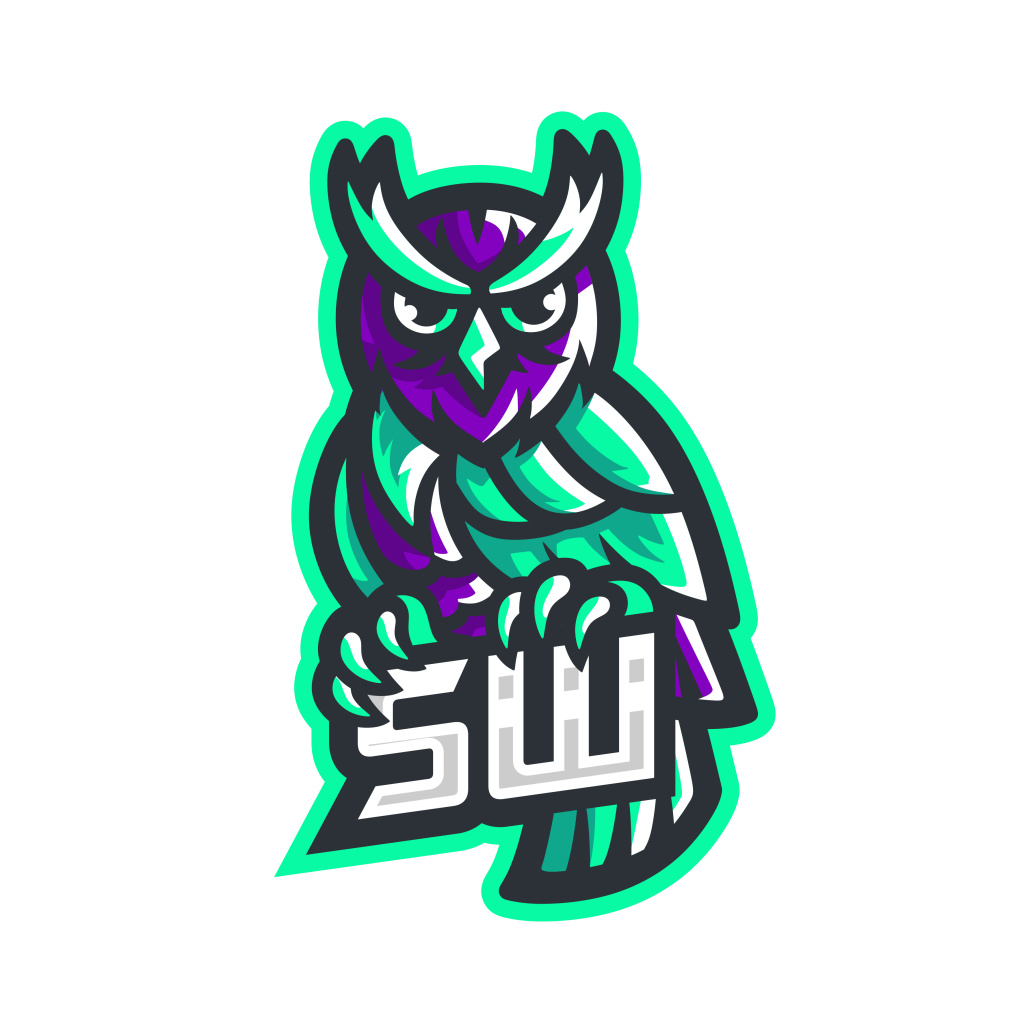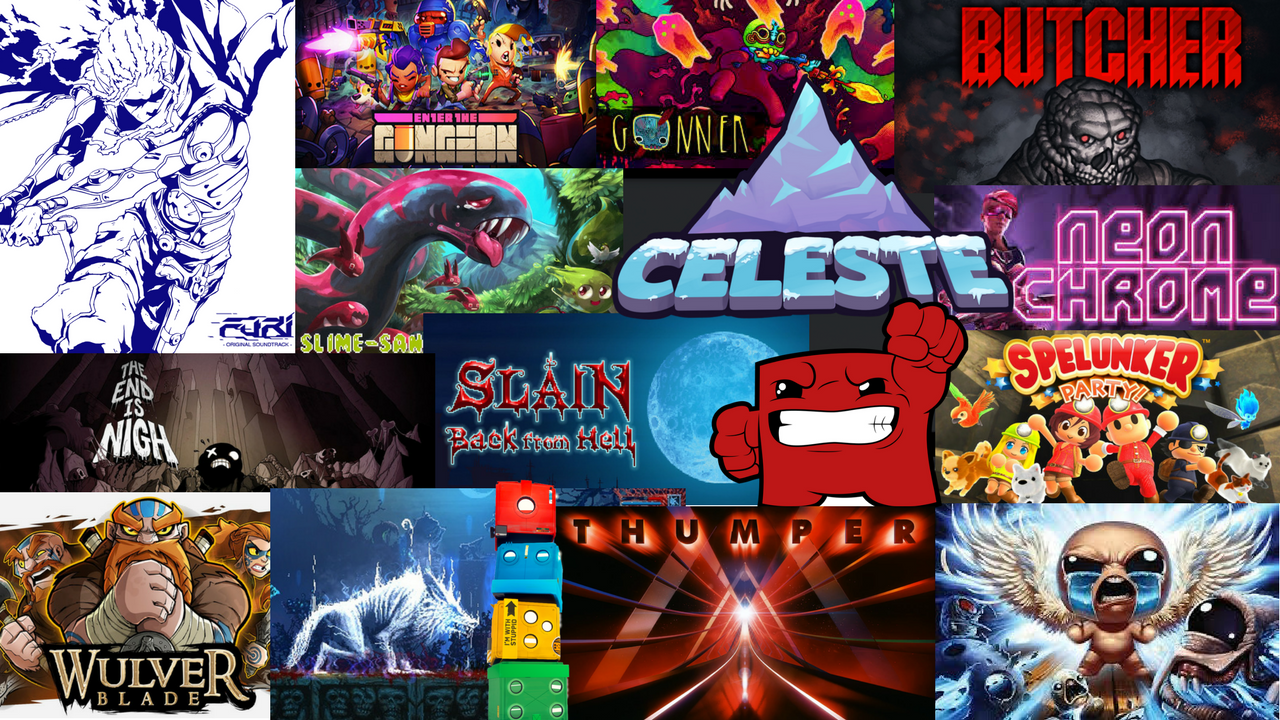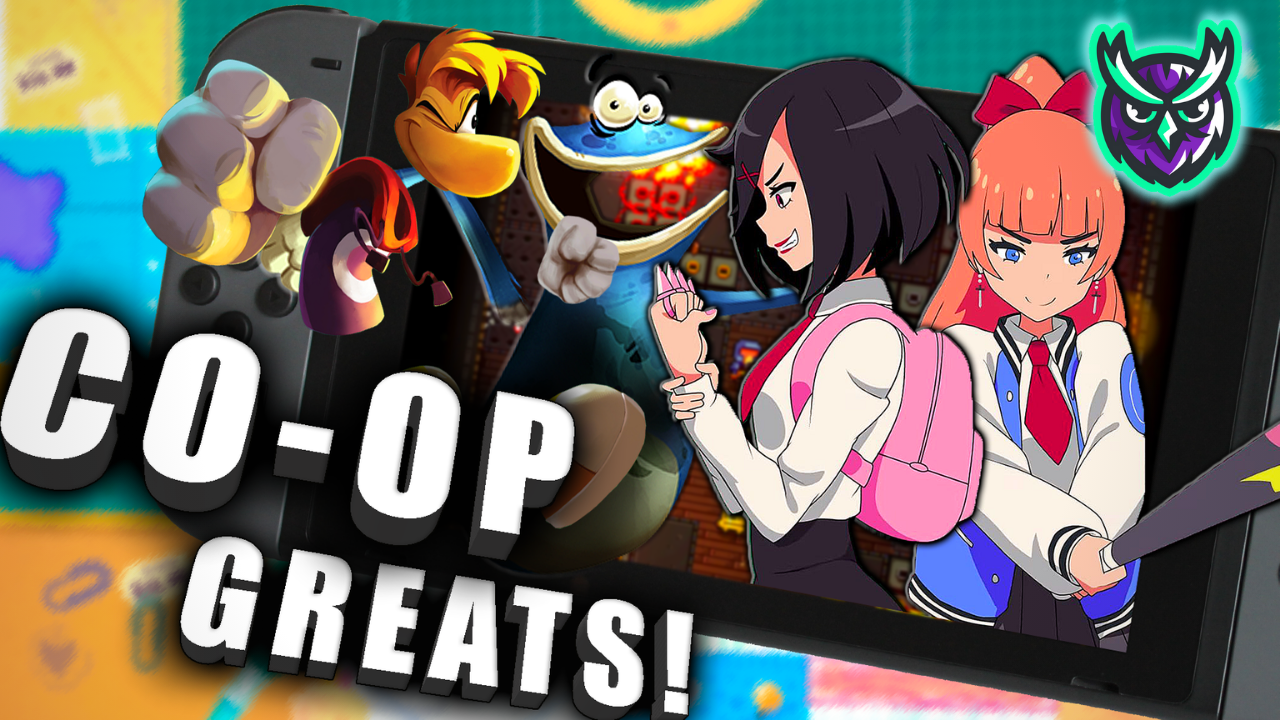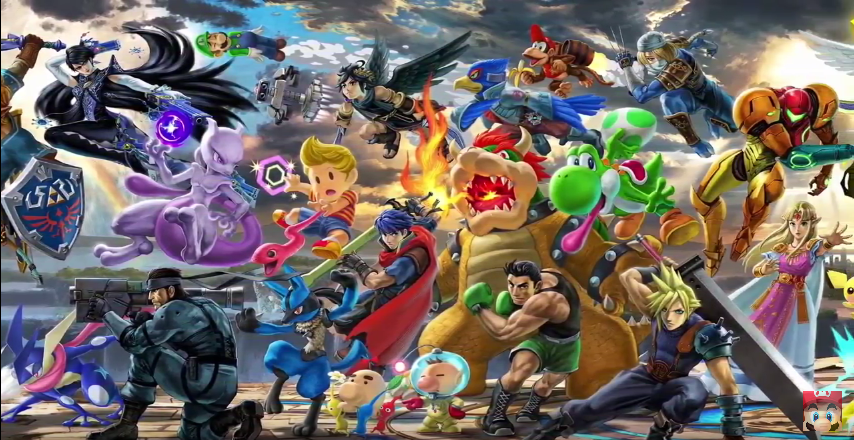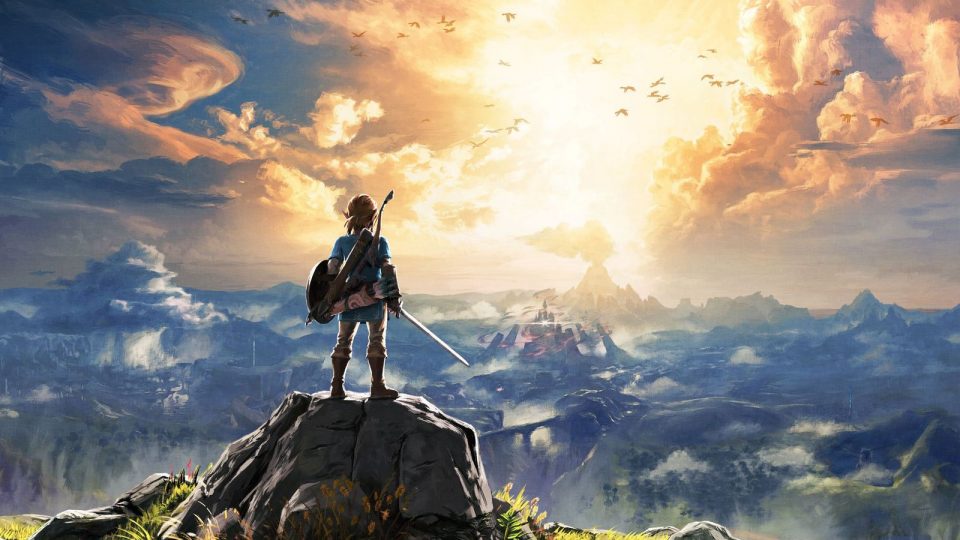
Over the course of E3, we were overloaded with new information on the next Smash Bros game. While we didn’t learn anything about a story mode, online functionality or custom stages, we learned a plethora about the actual characters and new mechanics in the game. Join me as I go about dissecting Super Smash Brothers Ultimate based off the Nintendo Direct footage, the Nintendo Treehouse discussion and the invitational tournament!
In regards to the actual mechanics of the game, we were able to glean quite a lot of information as well which I will break down step-by-step.
The directional air dodge has returned! But wavedashing hasn’t?
One of the big changes was to the air dodge. Hearkening back to the Melee days of yore, the directional air dodge has returned! What this means is when you press the L or R button in the air, your character will briefly become invulnerable while falling. By holding a direction with the left analog stick when you perform an air dodge, your character will sharply move that way a fair distance. However, a few changes have been made since its Melee iteration.
When performing an air dodge in Melee, you would enter what is called a special fall. This means your character becomes helpless while falling until they touch the ground again or get hit. In Smash Ultimate, your character can still move after air dodging, but there is a significant amount of ending lag to take into consideration. This means that you are unable to perform any inputs after air dodging for several frames. You must be careful while air dodging as it can leave you vulnerable or even lead you to SDing (committing suicide) off the edge.
As this end lag after air dodging was not present in Melee, it meant that you could quickly press jump then air dodge towards the ground to quickly slide. This could be done repeatedly to quickly maneuver around your opponents. Wavedashing is the name this technique is known by. In many ways, it is the calling card of Melee. Most skilled Melee players consider it to be one of the most essential techs, among many others, to master in order to play the game at a high level. I noticed that we did not see a single use of wavedashing in the invitational tournament despite the presence of such talented Melee masters as Armada and Mango.
Not seeing the technique appear during the tournament led me to the conclusion that it isn’t possible to wavedash in Smash Ultimate. After much consideration, I believe that the end lag following the air dodge is what broke wavedashing in this game. I won’t be sure until I get my hands on the game myself. But, for now, I feel it is safe to assume that it is gone until the game is out in the wild and people have time to experiment and find a way to do it.
*Note: After the conclusion of the invitational, Armada uploaded a video to Youtube with his thoughts on the experience. He addresses that wavelanding is in the game, but if you waveland next to the edge of a platform, your character simply stops at the edge instead of going off. Wavelanding is performed by pressing a directional air dodge towards the ground while falling. This allows you to quickly slide along the ground.
Armada briefly addressed wavedashing and alluded that the technique is possible in the game but somehow the movement may be too slow to make it worthwhile. I am uncertain at the moment as he was vague in his description. Again, this is something I will need to test myself later this year.
Your invincibility frames after dodging becomes shorter if you dodge too much.
Defensive play isn’t as rewarded as it was in Smash 4. One situation that was quite common in Smash 4 was some players simply constantly dodging around until their opponents would leave their selves open. This could lead to some disappointingly boring matches. In Smash Ultimate, if you rely on dodging too much, your invincibility frames after dodging will slowly become shorter and shorter until your dodge is little more than a fancy way to move around on the screen. If your opponent is aggressive and you try to rely on dodging too much, you may find yourself getting Falcon Punched more often than you would like!
Perfect Shield
Speaking of rewarding aggressive play, the perfect shield has been altered. Performing a perfect shield allows you to parry attacks and leave your opponent temporarily stunned. Until now, to perform a perfect shield, you had to bring up your shield at the correct time. The activation timing of the technique has been flipped to give it a much greater risk/reward.
Now, to use it, you must release your shield at the moment of impact from your opponent’s attacks. Doing so correctly results in the attacker being briefly stunned for a few frames. The greatest benefit of needing to release your shield to perform the technique is if you are successful, you can capitalize immediately on your freshly stunned target to punish them furiously. Missing this timing could naturally leave you completely vulnerable to a hard punish, so your actions must be incredibly deliberate. This new perfect shield mechanic is a shining example of the encouraged aggression design philosophy Smash Ultimate is pursuing.
In addition to the vital changes made to the function of the technique, it has been made more dramatic than ever before. Your character performs a new parry animation, their eyes glow and the screen even pauses briefly in one-on-one matches to heighten the dramatic effect and give the player a tiny bit of extra time to enact their quick and decisive onslaught.
The biggest weakness to the new perfect shield option is that you must bring up your shield before your opponent attacks. Instead of unexpectedly shielding at the last second as you would in the previous games, this time you must telegraph it by doing it beforehand. If you try relying on the perfect shield too much, your opponent will be able to easily predict it and counter you with a grab. However, I envision that some players will get to the level that they can unexpectedly bring up their shield in the very moment before their opponent attacks and release it at the right time for that tantalizing, epic, last-second parry which will elude the grasp of so many players.
For a short but great frame-by-frame breakdown of exactly how much perfect shielding in Smash Ultimate can give you an advantage, check the video down below.
A new blast zone box shows how close you are to death
Along with these changes which encourage players to be more offensive, there are new and easier ways to track yourself. For example, after you are attacked and sent flying towards the blast zones, a small box will appear on the screen as you exit the viewable limits of the stage. This box clearly shows how close you are to your demise, and it makes it a little easier for you to track exactly how you need to control your DI (directional input) to survive. This may not help most tournament level players who have trained DI into the very fabric of their muscle memory, but it could be something of great assistance for more casual players.
Another simpler way for experienced players to track the exact percentages at which their characters can kill or be killed is how the damage percentage display has been altered to show your damage all the way down to a tenth of a percent. Until now, it was displayed in whole numbers, so this seemingly minor change should allow keenly observant players to be even more precise in determining match ups or when to launch that killer strike.
The 1v1 experience has been slightly revamped

The biggest change that has been made to the one versus one gameplay is in the form of damage output. In order to maintain the ferocity of three or more person matches, the amount of damage dealt by characters has been increased in the 1v1 setting. A great point of interest here is how exactly they will balance this to avoid giving any particular characters an advantage over any others. Also, to what extent exactly has the damage been increased? Was knockback also increased? Did Ganon’s package finally return for some epic paused, pelvic thrusting taunts among friends? The world must simply wait to find out.
The camera zooms in for a slightly slo-mo kill shot when you KO an opponent.
Speaking of Ganon, have you ever noticed how awesome it is when he lands that magnificently slow Ganon Punch of all holy hell? Now, take that punch, zoom in the camera slightly and briefly enter a slow motion celebration of that fist of almighty glory sinking into its decimated victim’s face. That is what happens now when you land a hard hit which sends your opponent (or you) off the stage! Or at least when it technically should by the expectations programmed into the game by the dev team. As was on full display in the invitational, players can save theirselves via DI, but doing so when the game expects players to be sent flying off to their untimely demise can cause this zooming effect to happen repeatedly.
Is Rage back?
A mechanic introduced into Smash 4 was called rage. As your damage was increased, the amount of damage and knockback you dealt was also incrementally increased as you progressed from 40% up to a max of 300%. As your rage built, a small animation around your character indicated the steam of intense anger steadily grew. I noticed that characters still seemed to get this rage aura, but it was not specifically addressed in the Nintendo direct or treehouse to my knowledge. Additionally, the Smash players who participated in the invitational said that they felt like rage was still present, but they weren’t sure. This seems to indicate that it is there but perhaps nerfed?
The next change to the 1v1 experience is fairly minor and mostly cosmetic. For example, when a player loses a stock, the score is briefly displayed in the middle of the screen. I personally have mixed feelings on this as it is something I am not used to, but it does seem to be another indication of the push Smash is being given in the competitive direction since it keeps the thought of who is ahead on the forefront of all players’ and spectators’ minds.
For this last part, I will be moving away slightly from actual gameplay mechanics to other features or changes which could greatly affect the experience.
Custom moves are no more?
In the interview between GameXplain and Nintendo’s Bill Trinen and Nate Bihldorff, Nate didn’t explicitly say that custom moves aren’t in the game, but he very strongly hinted at it. When discussing how he loves the character Palutena, he didn’t use her much in Smash 4 because he could never decide which moves to use. He said, “I really love Palutena, but I couldn’t play her on the last game because I am paralyzed by choices and she didn’t have a set moveset. I never got as good with her as I wanted to because I couldn’t decide because ‘Maybe I’d have a better balance with these…’ This has been taken away. She has her own moveset.”
This may come as a disappointment to some since it means the potential of being able to set up your ideal moveset and the variety which came with it is gone. However, it also means that the developers had a far less strenuous task of attempting to balance a staggering 8 special moves per character. This could be an excellent indicator that Smash Ultimate will be significantly better balanced right from the start provided some last minute overhauling can be done to Bayonetta to fix the imbalance of her 0-to-death ladder combo.
Is there a stage hazard toggle?
In the aforementioned interview, GameXplain’s Ash mentioned that there have been whispers of a stage hazard toggle being present. When asked if this toggle would allow player to, for example, turn off the Yellow Devil on Mega Man’s Dr. Wily’s Castle, Nate dodged the question and responded, “I think the details of that you should look forward to hear more about as we get closer to launch date.”
If this feature is present, it will make significantly more stages viable in a competitive setting for stage hazards which can kill players is generally an automatic disqualifying variable for most stages. Not only that, but there are plenty of people who play for fun that just get tired of being killed repeatedly by stage hazards.
Conclusion
Even with as much as we have learned, there is certainly far more that we were not exposed to over the last week. Is there going to be a story mode similar to Subspace Emissary Mode? What does the online scene look like? What will custom stages be like? Can we import our Smash 4 custom stages? There will certainly be more we will learn in the coming months, and I’ll keep you updated as information rolls out.
Also, I did not watch the Nintendo Treehouse second and third days, so there may be more information I missed. If you can think of anything I didn’t mention, let me know down in the comments below, and I’ll update the information within the article.
There was plenty more info we learned about individual characters, so stay tuned for my next Smash Ultimate feature which will be focused on our two new characters, Ridley and the Inklings.
